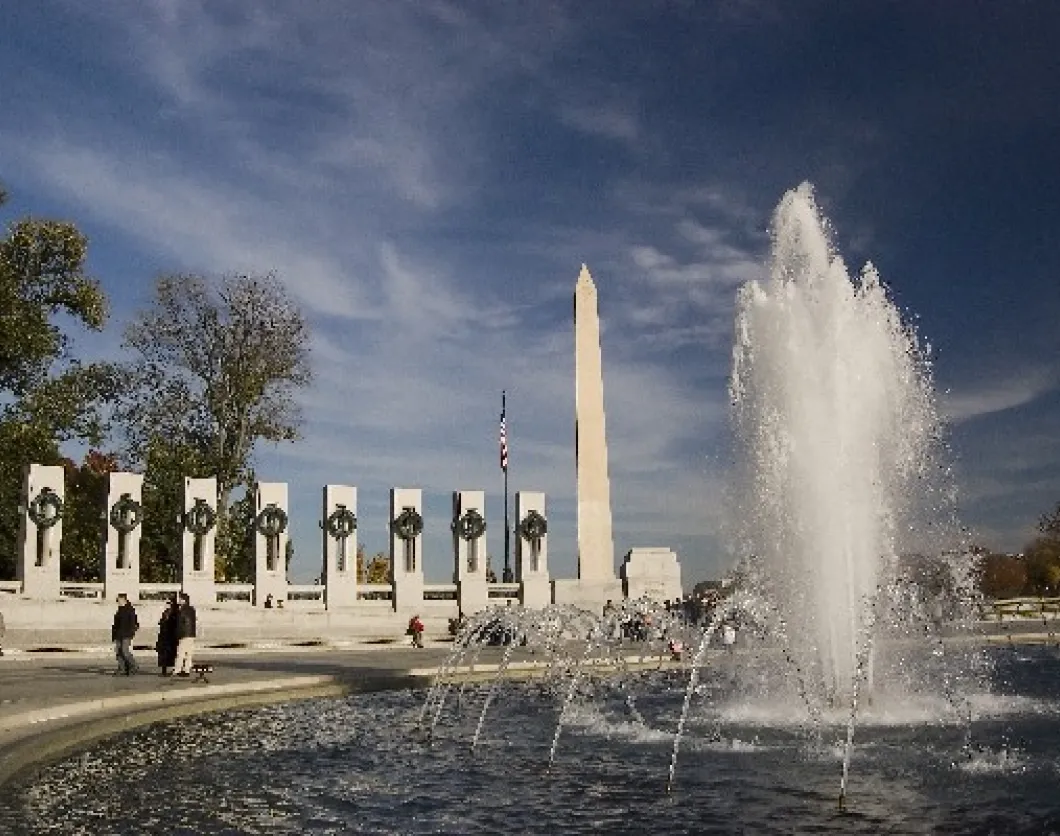Perhaps the least known of the World War II memorials in the U.S. is in Hackensack, New Jersey, and the best known is in Oahu, Hawaii. Still, all of them remind us the bravery of soldiers and the horror of war.
The USS Ling
The centerpiece of the New Jersey Naval Museum is the USS Ling, a World War II era submarine docked in the Hackensack River, which offers guided tours that are sometimes led by veterans who survived the war. In nearby Borg Park there is a submarine memorial honoring the more than thirty five hundred submariners lost during the war and the submarines that sank with them. The Ling has been restored and now carries on the memory of the men who gave their lives while serving their country.
While visiting the Ling and the submarine memorial, visitors can also tour the New Jersey Naval Museum and its many exhibits that include a Japanese suicide torpedo and a German two-man submarine, along with a Vietnam era patrol boat and a collection of other unique items, photographs and Navy memorabilia.
The USS Arizona Memorial Shrine
One of seven battleships docked in Oahu when the Pearl Harbor Attack occurred, the Arizona sank along with over eleven hundred crew members after being torpedoed. It is a shrine to all crew members who died that day in 1941 during that Japanese attack on the fleet. A simple white marble memorial has been built over the middle of the sunken battleship, which can hold up to two hundred people. There is a wall at one end displaying the names of all the sailors and marines who died on board the ship that day. Since only seventy five bodies were recovered, the remains of most of those killed are still in the hull. Tours begin with a film showing the Pearl Harbor bombing and then a Navy boat takes visitors to the site and back.
Besides the USS Arizona, visitors can tour another battleship that was berthed along battleship row that day in 1941, the USS Oklahoma, on which over four hundred marines and sailors died. It is now docked alongside the USS Missouri, where visitors can stand on the deck where the war ended with the signing of the Japanese surrender in a formal ceremony.
National World War II Memorial
Located in Washington, DC, this is one of the country's newest memorials to honor the men and women who served in the United States Armed Forces and the over four hundred thousand who died. It also honors the people back home who helped by supporting the war effort. The Washington and Lincoln Monuments flank this shrine which is open twenty-four hours daily. Its fountain and plaza are surrounded by a semi-circle of fifty-six pillars and triumphal arches. To the west of the memorial is a wall with the dedication that reminds visitors the price of freedom.
This memorial is located on the National Mall, which is quite spectacular in the spring when the cherry trees bloom around the Tidal Basin. The Japanese presented the United States with over three thousand cherry trees in 1912, long before the Pearl Harbor attack, and they now attract thousands of visitors each year when they burst into bloom.
West Coast World War II Memorial
On the Presidio overlooking the Pacific Ocean in San Francisco is a memorial honoring American military members who were lost or buried at sea in the Pacific. A statue of Columbia stands proudly in its center as she looks toward the ocean, as if waiting for them to return home. This site is one of San Francisco's hidden gems.
Tuskegee Airmen National Historic Site
At a hangar in Moton Field in Tuskegee, Alabama is a national historic site dedicated to the African American airmen who served the country during World War II. This began as an experiment by the Army Air Corps to see if blacks could become combat pilots. It was here that one thousand pilots began their flight training, after which these aviators served the country with distinction, despite the odds of segregation and discrimination. This U. S. fighter group became one of the most respected during the war. The hangar museum can be visited for tours free of charge Wednesday through Sunday.
East Coast Memorial
In New York City's Battery Park, President John F. Kennedy dedicated this memorial to almost five thousand servicemen who died in the Atlantic Ocean during World War II. The large plaza has eight huge pylons made of granite that are inscribed with the names of the dead. A bronze eagle sculpture with its talons gripping a laurel wreath signifies mourning for the ones lost at sea.
Battery Park was named for the artillery batteries stationed there many years ago when they protected the city's southern end. Today visitors can view the new World Trade towers that are being constructed after the original ones were destroyed in the terrorist attacks of 9/11.
So, we are in the era of a new war, the war on terror, but as Americans we do not forget the country's heroes of what some call "the greatest generation", World War II.









